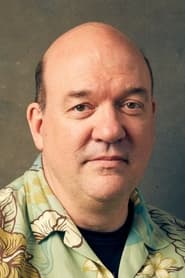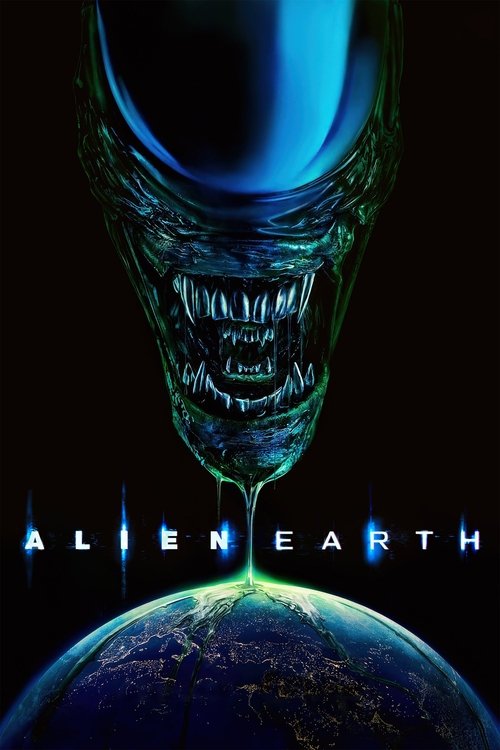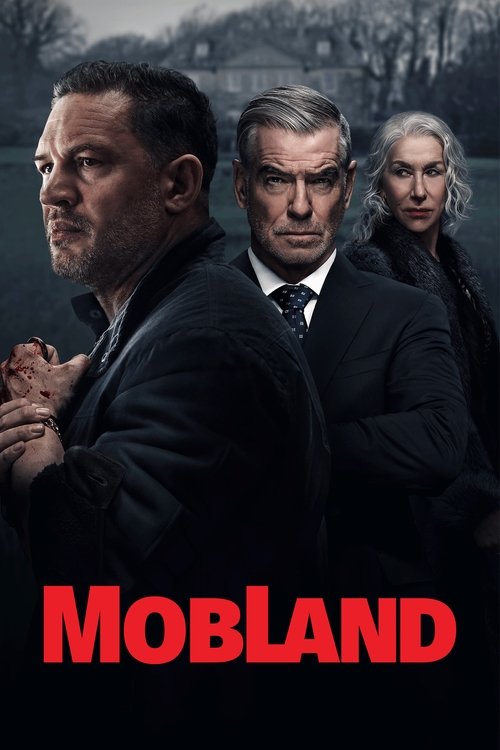
Ask Your Own Question
What is the plot?
Detective Renée Ballard begins her new role leading the LAPD's underfunded Cold Case Unit in the San Fernando Valley, determined to solve long-forgotten crimes despite minimal support and political resistance within the department. Early in the season, the unit reopens the murder case of Sarah Pearlman, sister of a city councilman, which soon connects to older unsolved cases, including one previously investigated by retired detective Harry Bosch.
Ballard and her volunteer team work through layers of evidence, uncovering a string of murders linked to a serial killer named Gary Pearlman. As they dig deeper, Ballard faces skepticism and obstruction from within the LAPD, as well as personal trauma from her past that complicates her pursuit of justice. Meanwhile, the team also investigates a mysterious John Doe case tied to a cartel conspiracy, which remains unresolved throughout the season.
A key sequence occurs when Ballard visits the home of Olivas, a man connected to the cartel and the John Doe case. This visit triggers a series of events leading to Olivas's murder, which becomes a central mystery. Ballard's presence at Olivas's house makes her a suspect in the eyes of the police, complicating her position further.
The team suffers a major blow when Ted, a member of Ballard's unit, dies in the hospital, devastating the group. After Ted's funeral, Jake, a councilman and ally, visits Ballard to give her Gary Pearlman's notes and informs her he is withdrawing from the political campaign but promises ongoing support. Jake reveals that Ted was furious with him for considering replacing Ballard, indicating internal political tensions.
In a tense confrontation, Ballard is alone in the basement office when the power suddenly cuts out. She quickly texts someone that Gary is inside the building, anticipating danger. Gary arrives intending to kill Ballard, but she fights back fiercely. The police arrive just in time to arrest Gary, unmasking him as the serial killer responsible for the string of murders.
After Gary's arrest, Ballard shows interview footage to Bosch, who questions Gary's motives for killing Laura, one of the victims. The cartel's involvement in Olivas's murder remains a critical unresolved thread. The police suspect Ballard due to her visit to Olivas's house, framing her as an easy suspect in a larger conspiracy.
The season ends on a cliffhanger with Ballard's arrest, hinting at a deeper cartel conspiracy and a cover-up within the LAPD. The serial killings are partially resolved with Gary's capture, but the John Doe case and the true circumstances of Olivas's death remain open, setting the stage for future developments.
What is the ending?
The ending of the 2025 TV show Ballard concludes with the protagonist, Detective Renée Ballard, being arrested for the murder of Robert Olivas, a disgraced former LAPD officer and her abuser. After exposing a corrupt network of dirty cops tied to Olivas, Ballard confronts him in a heated encounter. Hours later, Olivas is found dead, shot with a police-issued firearm, and Ballard is taken into custody, leaving the season on a tense cliffhanger.
The final sequence of Ballard unfolds as follows:
Renée Ballard, having spent the season solving cold cases and exposing corruption within the LAPD, reaches a critical turning point. She confronts Robert Olivas, a former officer who had abused her and was deeply involved in a corrupt team of cops working for a cartel. This confrontation is intense and emotionally charged, with Ballard expressing her anger and frustration toward Olivas. After this confrontation, she leaves the scene, visibly shaken but resolute.
Several hours later, Olivas is discovered dead, executed with a single shot from a police-issued gun. The circumstances of his death are suspicious, and the investigation quickly points toward Ballard due to her recent confrontation and history with Olivas. The final moments of the season show Ballard being handcuffed and arrested for his murder, despite her protests and the unresolved questions surrounding the case.
Regarding the fates of the main characters involved at the end:
-
Renée Ballard: Arrested and charged with the murder of Robert Olivas. Her fate is left uncertain, setting up a major storyline for the next season.
-
Robert Olivas: Found dead, shot with a police firearm. His death is the central mystery of the finale.
-
Manny Santos: A dirty cop who had confessed and whose testimony led to Olivas's arrest but was later released after a deal with the DA. His role in the corruption network is significant but his fate at the finale is not detailed.
The season closes on this unresolved note, emphasizing the themes of corruption, justice, and the personal cost of Ballard's pursuit of truth. The arrest of Ballard, despite her efforts to expose wrongdoing, highlights the complex and often murky nature of law enforcement and accountability within the LAPD as portrayed in the series.
Is there a post-credit scene?
Yes, the TV show Ballard (2025) does have a post-credit scene. In this scene, after the main events of the finale, Renee Ballard is shown sitting alone in the basement office when the power suddenly cuts out. She senses danger and quickly texts someone that Gary, the serial killer, is inside the building. Gary then appears, intending to kill her, but Ballard fights back fiercely. The police arrive just in time to arrest Gary. Afterward, Ballard shows the interview footage to Bosch, who wonders what motivated Gary to kill Laura.
This post-credit scene serves as a tense cliffhanger that underscores the ongoing threat and sets up further developments for the next season. It highlights Ballard's resilience and the continuing danger posed by Gary, even after his identity as the serial killer is revealed.
Who is revealed to be the serial killer in Ballard (2025) and what motivates their actions?
Gary Pearlman is unmasked as the serial killer in Ballard (2025). His motivations are explored through his violent confrontation with Ballard and the connection to the cartel, with the show hinting at deeper conspiracies and personal vendettas driving his actions.
What is the significance of the John Doe case in the series, and how does it connect to the cartel?
The John Doe case remains unresolved by the end of the first season and is tied to a cartel conspiracy. Ballard discovers LAPD cover-ups related to the case, and it is suggested that the cartel is involved in the murder of Olivas, a key figure connected to the case.
How does Detective Renée Ballard's relationship with councilman Jake Pearlman influence the investigation?
Councilman Jake Pearlman pressures Ballard to make progress on the murder of his sister, providing her with notes and evidence. Despite political tensions and his eventual withdrawal from the campaign, Jake remains an ally, urging Ballard to bring Gary in alive and supporting her efforts within the council.
What role does the volunteer cold case unit play in the investigation, and who are some key members?
Ballard leads the LAPD's underfunded, all-volunteer cold case unit tasked with solving decades-old homicides. Key members include detective Zamira Parker, reserve officer Ted Rawls, law student Martina Castro, stay-at-home mom Colleen Hatteras, and retired detective Thomas Laffont, each contributing unique skills to the investigations.
What personal challenges and dangers does Ballard face throughout the series?
Ballard confronts personal trauma from past incidents, professional challenges including attempts to have her fired after a shooting, and life-threatening dangers such as an attack by Gary Pearlman. She also deals with being framed and targeted by corrupt forces within the LAPD and the cartel, complicating her pursuit of justice.
Is this family friendly?
The TV show Ballard (2025) is not family friendly and is rated TV-MA, intended strictly for mature audiences 17 and older. It contains graphic violence, harsh profanity (including strong language such as f- and s-words), and morally complex, emotionally heavy themes related to crime, police corruption, and trauma.
Potentially objectionable or upsetting aspects for children or sensitive viewers include:
- Detailed depictions of violent crimes and murder investigations, including cold cases involving death.
- Graphic and realistic portrayals of violence and its aftermath.
- Strong language and profanity throughout the series.
- Themes of police cover-ups, corruption, and emotional trauma, which may be disturbing or complex for younger viewers.
- Some scenes may involve intense emotional distress and morally ambiguous situations.
Overall, Ballard is a gritty, realistic police procedural best suited for mature viewers prepared for its dark and serious content. It is not recommended for children or casual family viewing.
What is the ending
The ending of the 2025 TV show Ballard concludes with the protagonist, Renée Ballard, being arrested for the murder of Robert Olivas, a disgraced former LAPD officer connected to corruption. After confronting Olivas in a heated encounter, he is later found dead, shot with a police-issued firearm, and Ballard is taken into custody as the prime suspect. This shocking cliffhanger leaves unresolved questions about whether Ballard was framed and hints at a deeper conspiracy involving cartel connections and police corruption.
In the final scenes, Ballard calmly gives Olivas's wife contact information for Berchem, suggesting there is more to the story. Meanwhile, the serial killer Gary Pearlman is revealed and arrested, but the overarching John Doe case and cartel conspiracy remain unresolved. The show ends with Ballard fighting to clear her name in a system stacked against her, setting up a potential second season to explore these threads further.
Thus, the ending is deliberately ambiguous and tense, focusing on Ballard's arrest and the larger corruption and conspiracy that remain to be uncovered.
Who was in the rear view mirror at the end?
At the end of the 2025 TV show Ballard, the person seen in the rear view mirror is Gary Pearlman, the serial killer who has come to kill Renee Ballard. She senses danger when the power cuts out in her basement office, texts someone that Gary is inside, and then fights him off until the police arrive to arrest him. This confrontation happens just before Ballard herself is arrested for the murder of Robert Olivas, a corrupt former LAPD officer found dead with a police-issued firearm, which sets up a major cliffhanger for the next season.
Thus, the rear view mirror scene symbolizes the imminent threat Gary poses to Ballard and marks the climax of the serial killer storyline, while the unresolved murder of Olivas and Ballard's arrest hint at deeper conspiracies and corruption to be explored further.




























